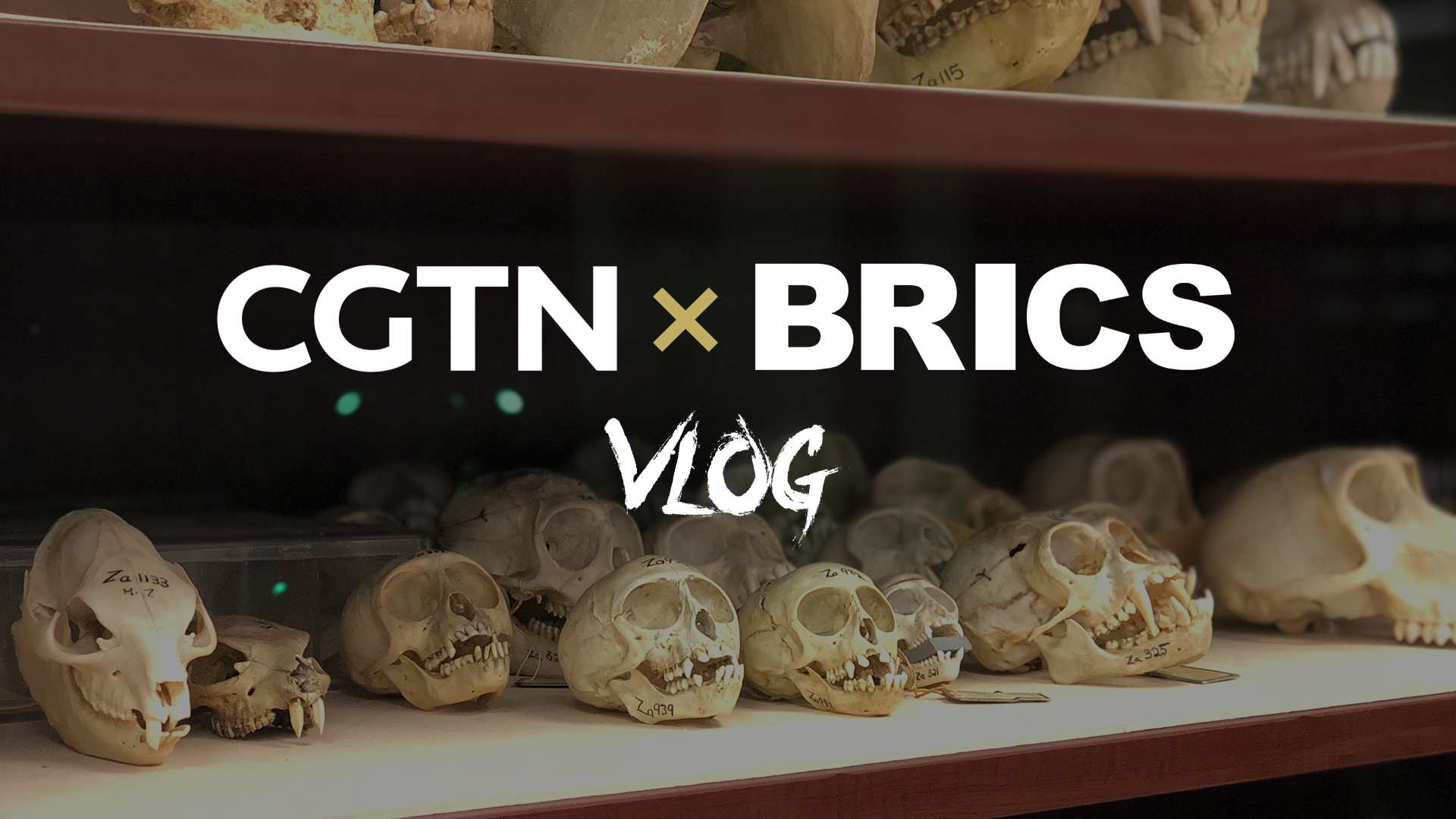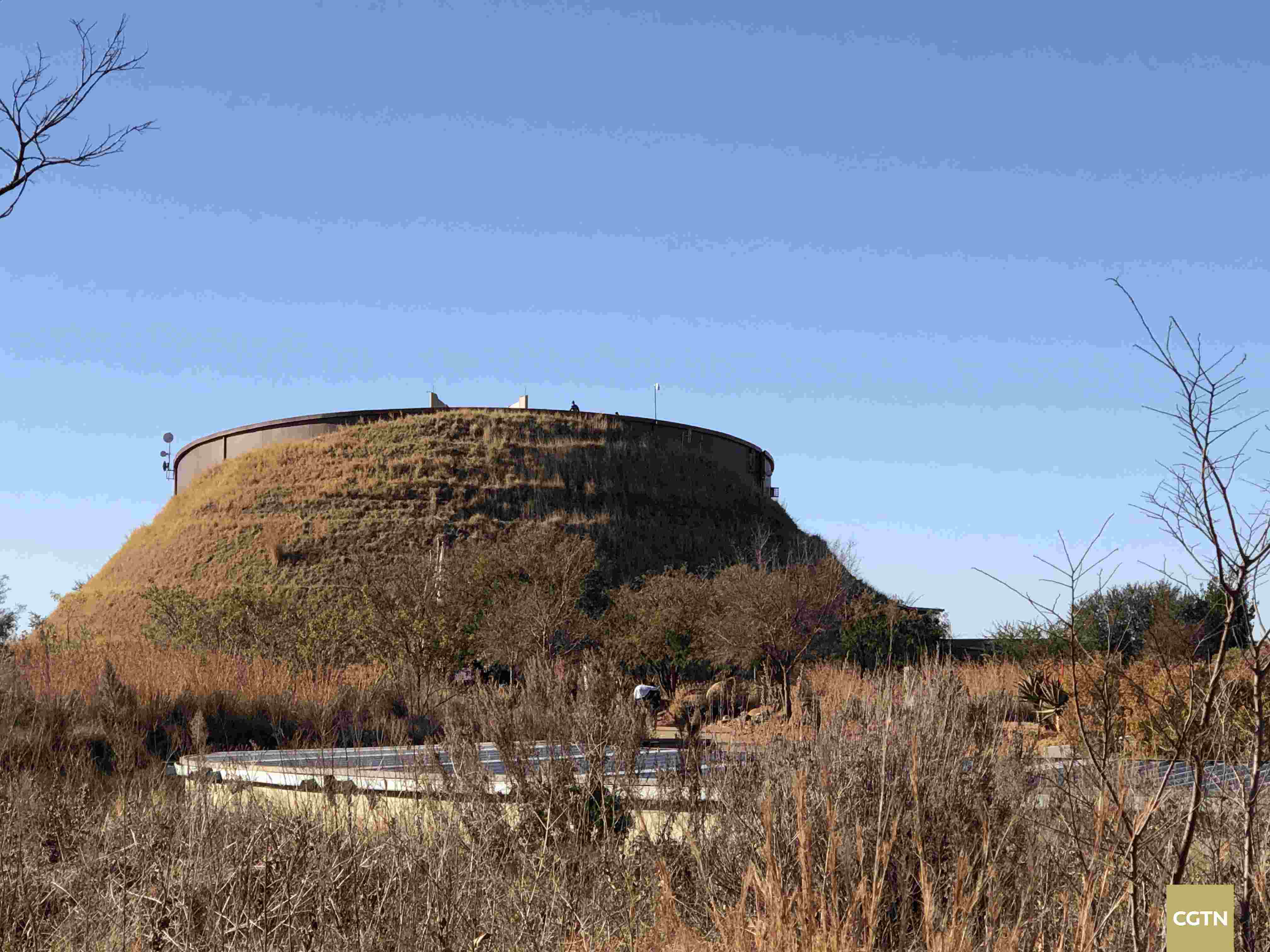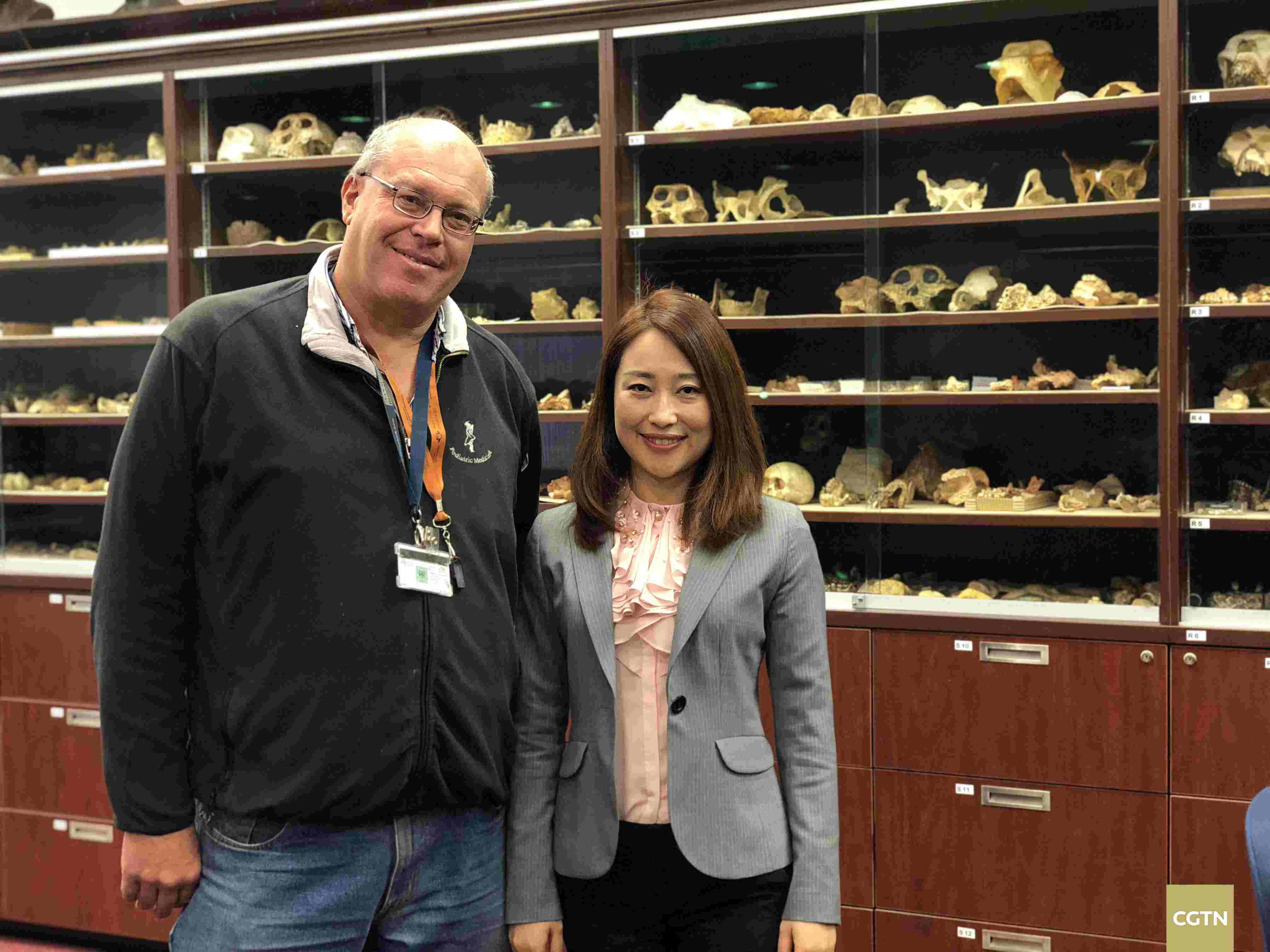
Politics
23:12, 24-Jul-2018
BRICS Vlog Ep5: Mind your skull
Updated
22:52, 27-Jul-2018
CGTN
01:43

A 50km drive north of Johannesburg is the “Cradle of Humankind”, nestled in the peaceful Sterkfontein valley.
It is the resting place for fossils of hominids that date back two million years.

Cradle of Humankind /CGTN Photo
Cradle of Humankind /CGTN Photo
In the early 20th century, paleontologists from the University of Witwatersrand (Wits University) were among the first to discover the caves. They found pre-human skulls, including the "ape-man" Taung Child and “Mrs Ples,” as well as an almost complete hominid skeleton known as “Little Foot.”
Paleontologists argue these discoveries provide the most valuable evidence of the origins of modern humans; hence, it’s named the “Cradle of Humankind.”
The site was declared a UNESCO World Heritage Site in 1999.
Nowadays, the Evolutionary Studies Institute at Wits manages the site and preserves a large collection of the fossils discovered there.

The skull fossils at Wits University /CGTN Photo
The skull fossils at Wits University /CGTN Photo
CGTN’s team visited Wits University to speak with paleontologist Doctor Bernhard Zipfel, who has regularly worked in China on collaboration programs. He says Wits has built increasingly strong connections with Chinese institutes since 2007, when the South African and Chinese governments signed an agreement on paleontology. The agreement promotes the study of palaeoanthropology, the exploration of the early development of anatomically modern humans, animals and ancient life, Zipfel says.

CGTN reporter Wu Guoxiu with Wits University's paleontologist Dr. Bernhard Zipfel /CGTN Photo
CGTN reporter Wu Guoxiu with Wits University's paleontologist Dr. Bernhard Zipfel /CGTN Photo
China has a longer history of studying human origins than South Africa, so, the paleontologist says, the collaborative projects provide scientists with rich resources for their studies.
Zipfel also tells CGTN that two of the lab’s most important skeletons, including “Little Foot,” will be on display to foreign leaders in South Africa for the 10th BRICS Summit.
(Story by Helen Dang; filming by Helen Dang; video editing by Zhao Yuxiang)
11714km
Previous episodes

SITEMAP
Copyright © 2018 CGTN. Beijing ICP prepared NO.16065310-3
Copyright © 2018 CGTN. Beijing ICP prepared NO.16065310-3